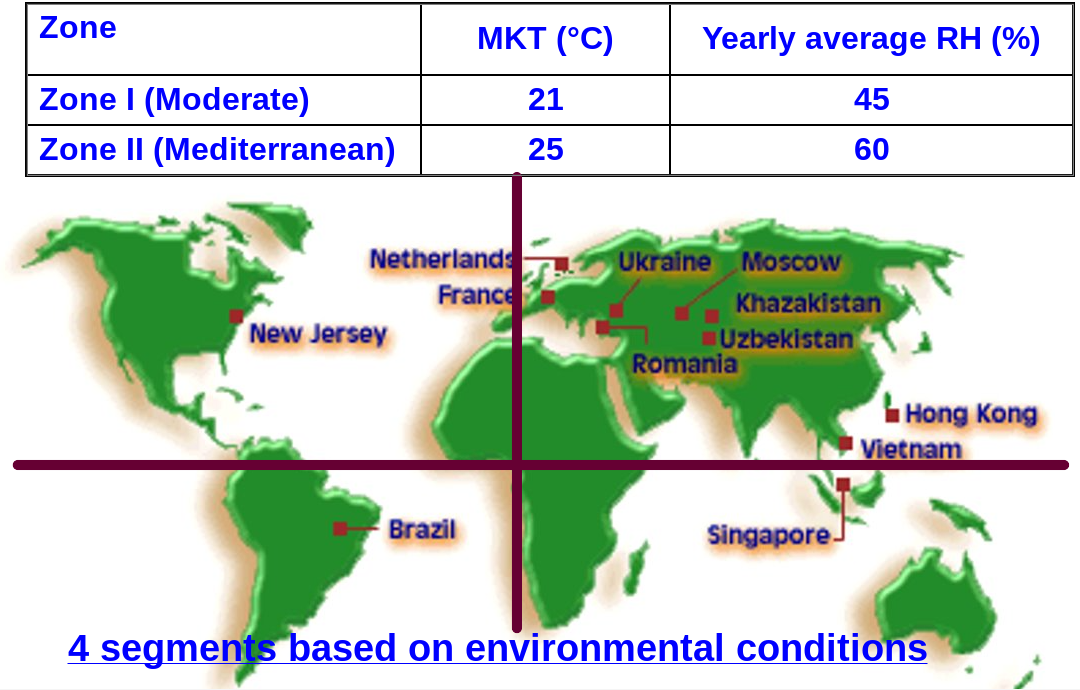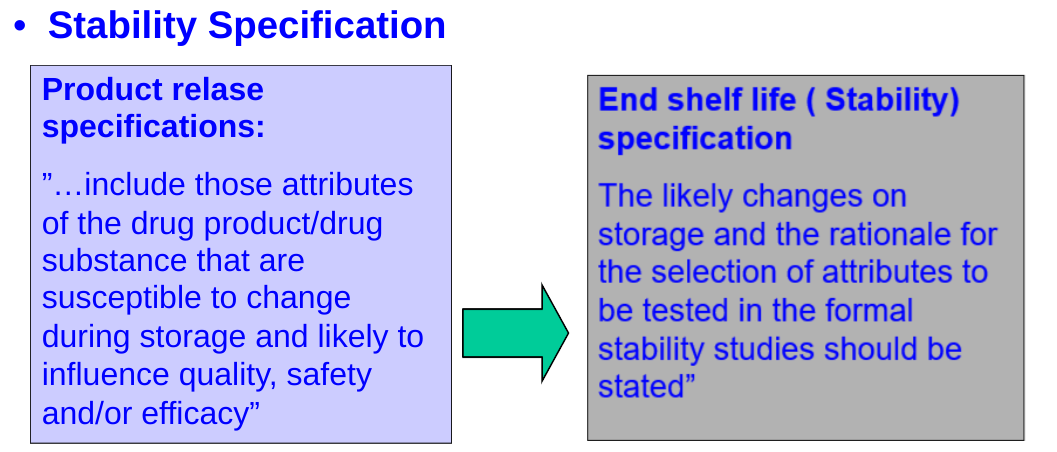
The ability of a pharmaceutical product to retain its
properties within specified limits throughout its shelf life.
Aspects of stability that are to be considered include:
Physical, Chemical, Microbiological & Biopharmaceuticals.
It is It is a study on the evidence on how the quality of a drug substance or drug products varies with time under the influence of variety of environmental factors such as Temperature, Humidity and Light.
of the drug is maintained during its maximal time of storage and intended use.
Starting a Study
Contents of a stability protocol
Setting the ‘start date’ for a stability study
Determining the ‘due dates’ for a stability study protocol The initial certificate of analysis at to for a stability study SOP Control
Format and layout of standard operating procedures Indexing procedure for stability studies
Index for stability sops
Study Parameters
Setting limits for check specifications in a stability study. Number and size of batches for stability testing.
Sampling
Number of samples required for performing stability tests Labeling of stability study samples
Storage configuration of samples in a stability environment
Storing the stability study samples under controlled conditions prior to analysis
Study Conditions
Intervals and climatic conditions for a development stability study Intervals and climatic conditions for a pivotal/bioequivalence stability study
Intervals and climatic conditions for a validation/pm stability study Placing the reference listed drug (RLB) on stability
Packaging procedures
Sampling and testing of pivotal batches – tablet & capsule dosage forms. Sampling and testing of pivotal batches – powder & syrups for reconstitution.
Container systems
Container-liner-closure systems for a stability study.
Certification of a container-liner-closure system.
Test methods
The control of analytical methods #’s and edition #’s in stability documentation
Test results
Reporting test results of a stability study.
Procedures for handling abnormal or OOS results in a stability study.
Audit and Review Raw Data
Auditing stability data in laboratory notebooks
Cross-referencing laboratory notebooks with computerized stability documentation
Chart Control
Recording stability study climatic conditions
Review and control of temperature and humidity recording charts
Validation and Sanitation
Periodic revalidation of climatic rooms and chambers
Sanitation and housekeeping requirements of climatic chambers
Corrective Action
Fault correcting procedures (after breakdowns) during a Stability Study Emergency procedures during a stability study
Stopping a Study
Conditions for stopping a stability study.
Self Inspection
Self inspection procedures in a stability department.
Job Description and Training
Job description of stability department personnel
Using stability SOPs and compliance program as stability training tools. The Do’s and Don’ts of a stability study – a department training tool.
Stability department compliance staff training
Reviewing Documentation
Review and auditing stability study documentation.
The layout and format of a regulatory stability report (a filed report)
Documentation requirements for a stability study – contents
of a stability dossier
Closing a Study
Accepting and signing-off a completed stability study.
Stability protocol – contents:
Stability studies during product life-cycle
 Guidelines for Stability Testing:
Guidelines for Stability Testing:
and drug products
Abbreviations – commonly used
Global climatic zones:
 Distribution of nations into different climatic zones:
Distribution of nations into different climatic zones:
| Region | Zones I & II | Zones III & IV |
| European | All countries | – |
| American | Chile, Canada, United States | Brazil, Jamaica, Venezuela |
| Asian | China, Japan, Turkey | India, Philippines, Sri Lanka |
| African | South Africa, Zambia, Zimbabwe | Botswana, Ghana, Uganda |
| Australian / Oceanic | Australia, New Zealand | Fiji, Papua – New Guinea |
Q1A : Stability Testing of New Drug Substances & Products.
Q1B : Stability Testing : Photostability testing of New Drug Substances & Products.
Q1C : Stability Testing for New Dosage Forms.
Q1D : Bracketing & Matrixing Designs for Stability Testing of Drug Substances & Products.
Q1E : Evaluation of Stability Data.
Q1F : Stability Data Package for Registration Applications in Climatic Zones III & IV.
Q3A : Impurities in New Drug Substances.
Q3B : Impurities in New Drug Products.
Q3C : Impurities: Guideline for Residual Solvents.
Q3C(M): Impurities: Guideline for Residual Solvents (Maintenance).
Specifications :
The testing should cover as appropriate : chemical, physical, biological & microbiological parameters. Validated analytical method should be adopted.

Second year : Every 6 months.
Thereafter : Annually.
Storage Condition : General case:
| Study | Storage condition | Minimum time period covered by data at submission |
| Long Term | 25 20C / 60 5% RH | 12 months |
| Intermediate | 30 20C / 65 5% RH | 6 months |
| Accelerated | 40 20C / 75 5% RH | 6 months |
Any “significant change” occurs during 6 month accelerated study, additional testing at intermediate storage should be conducted. The initial application should include a minimum of 6 moths data from 12 month study of intermediate storage condition.
“Significant change” for a drug substance is failure to meet specification. For drug product, it is given separately.
Storage Condition :
Drug Substance / Drug Product intended for storage in refrigerator :
Study |
Storage condition | Minimum time period covered by data at submission |
Long Term |
5 30C |
12 months |
Accelerated |
25 20C / 60 5% RH |
6 months |
If “significant change” occurs between 3 & 6 months of
accelerated study, data on long term study should be submitted.
If “significant change” occurs within 3 months of accelerated study, it is unnecessary to continue further testing.
iii. Storage Condition Drug Substance / Drug Product intended for storage in freezer :
Study |
Storage condition | Minimum time period covered by data at submission |
Long Term |
– 20 50C |
12 months |
There is no accelerated study for above case.
Drug substance intended for storage below – 20 0C should be treated case by case.
firmly establish the shelf life.